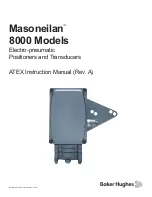
Rev1.0a | 45/50
CMT2300A
From the above table, it can be seen that the address range is from 0x00 to 0x71, which can be divided into 3 main banks for better
understanding. They are: Configuration bank (including 6 sub-banks), Control Bank1, and Control Bank 2. For the 3 banks the
address is continuous. They are all accessed via the SPI bus. They have different functionalities and design purposes, which are
shown in the below table:
Table 22. Description of Register Banks
Address
Bank Name
Bank Name in the
RFPDKExport File
Functionality
0x00-0x0B
Configuration Bank
(RFPDK export
the register
values
)
CMT Bank
CMT Bank
Users do not change them.
0x0C-0x17
System Bank
System Bank
Mainly relates to low power mode.
0x18-0x1F
Frequency Bank
Frequency Bank
To setup the TX and RX frequencies.
0x20-0x37
Data Rate Bank
Data Rate Bank
To setup data rate, deviation, bandwidths
and other related parameters.
0x38-0x54
Baseband Bank
Baseband Bank
To setup packet format and some FIFO
features.
0x55-0x5F
TX Bank
TX Bank
To setup TX deviation and power.
0x60-0x6A
Control Bank 1
(
Set by MCU in
application, not generated by RFPDK
)
--
To setup chip working state, frequency
hopping, GPIOs and interrupts control.
0x6B-0x71
Control Bank 1(Set by MCU in
application, not generated by RFPDK
)
--
To read interrupt flags and RSSI value,
control the FIFO.
To simplify the operation, users should firstly setup all the desired parameters on the RFPDK, export the register contents to the HEX
file, and use it to initialize the CMT2300A. For the CMT Bank, Frequency Bank, Data Rate Bank, and the TX Bank, users do not need
to study the details of the registers. Instead, these register configurations totally rely on the RFPDK. For System Bank and Baseband
Bank, users must study the details in order to play with them in different applications. Meanwhile, for Control Bank 1 and 2, users must
also understand the meaning of each register.
CMOSTEK provides a series Application Notes (AN) for the users to study
how to play with the chip, how to configure the parameters
on RFPDK, how to use each register, and other notable application skills. Users can start their learning from reading “AN142
CMT2300A
W Quick Start Guide”, which provides step-by-step guidance and leads the users to read other documents.






































